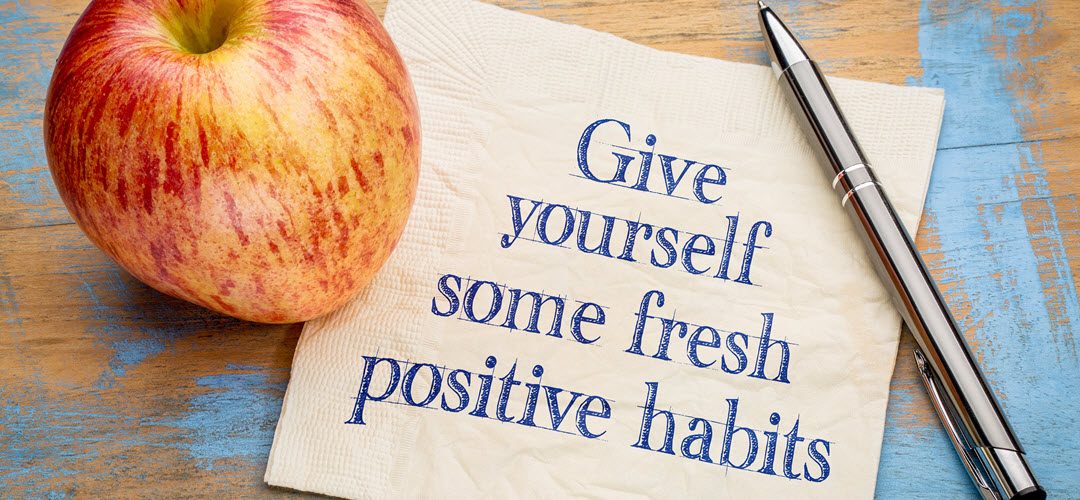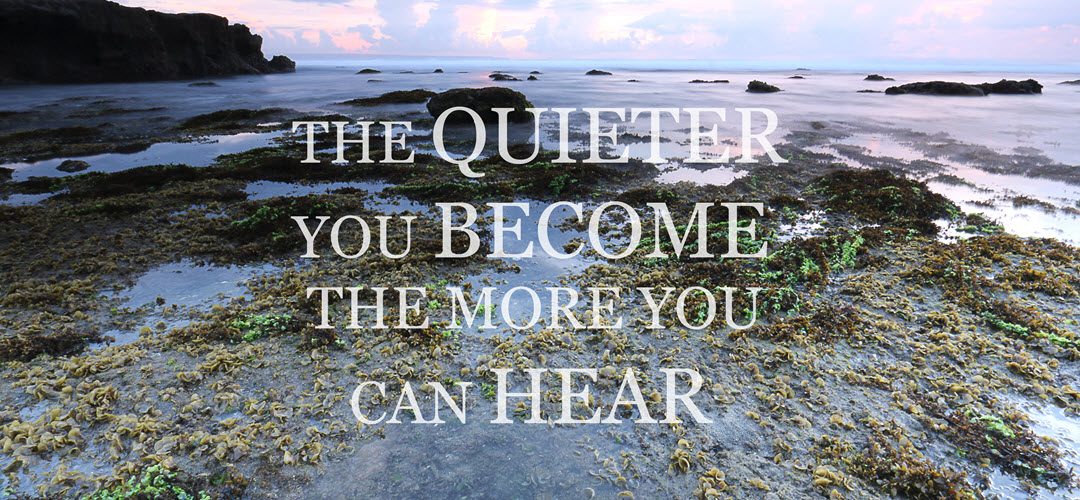
Calm My Racing Mind!
Lying awake at night, staring at the ceiling hour after hour. Thoughts pouring in like an open faucet.
Distracted no matter what I’m doing…can’t focus… my mind is darting everywhere.
If you ever have trouble quieting your mind, here is an exercise to try. The idea is to have a mental place to put all of your thoughts/”to-dos”/worries until you can deal with them, one at a time. You can rest them knowing they’ll be there when you are ready, but you don’t have to deal with all of them at one time, much less at this very moment. It’s a way to helpfully compartmentalize, drawing out to your attention just what you need right in the moment.
Some people make this a physical reality and create a beautiful container in which they put slips of paper with jotted thoughts. They find the act of writing and physically placing them outside of themselves brings more mental release. Go for it!
In either case, read the thought aloud a few times to familiarize yourself before trying it. Have someone read it if possible when you try it or even read it as you go, if needed. Or you can put it into a voice memo app to play back to yourself. You’ll soon get the hang of it.
Before you can do the Container exercise, you need two things: a mental “container” and a “safe place.” This requires two brief visualizations. Get in a relaxed, quiet place for a few minutes. Breathe deeply as you consider these things:
1. Think first of a beautiful container with a one-way lid opening, like a hinged box. Picture it in as much detail as you can. Might be something you have or just something you would like.
2. Then, close your eyes and visualize a ‘safe place.’ What comes to mind? Your home? Your childhood home or grandmother’s place? A favorite place in nature? Being with a certain person?
Pull in all the details of this safe place… what do you see, hear, smell, taste, and touch? Do you see other people or are you alone? Do you see walls or open space? Something beautiful? What color? Smell food or city smells? Farm smells? Perfume? Are you eating anything or tasting the salt of the ocean? What textures are you touching? What’s against your skin? Are you touching the ground or furniture? Sand, grass, etc? Paint as vivid picture as you can.
Once you have these pictures in your mind, you’re ready to put your cares into your “Container.”
Learn More
Succeed making a new habit!
We’ve all experienced it. Cleared the piles of paper off the kitchen counter and vowed to not let them accumulate again, but here they are. Told the dentist that, yes, we would start flossing more, but we haven’t. Told our therapist we’d cut back on the night-time emotional snacking we do, but we’re really having trouble with that one. And of course, exercise. Yeah, you probably know how that one goes, especially after the New Year. If these aren’t your weaknesses, think about what is. I’m sure you have an area of struggle. We all do!
Why is creating a new habit so hard when we feel so sure and committed to our intention?
Several things can be obstacles for us: goals that are unrealistic or too vague, habits that are not rewarding enough to perform or the gratification is too delayed, we’re uncomfortable with the structure the habit imposes, we’re derailed by interruptions, or our perfectionism undermines us. Additionally, we may feel too overwhelmed with our responsibilities to try to change, our mood isn’t oriented to the process (i.e., angry, sad, fearful, hopeless), or we have no support or accountability.
Researchers and psychologists in the field such as George Koob, Ph.D., B.J. Fogg, Ph.D., and Kim Kensington, Psy.D. agree that we need to do the following:
- identify small, achievable goals
- reduce our reliance on willpower
- reward success until the habit is done consistently.
So how do we do this?
- Prioritize the use of your time and pick a habit you want to add. Think about how much time this habit will take so you can decide where in your day/week it best fits. Break it down to its smallest first step. That’s where you’ll start. Determine if you’ll need any supplies/materials or other preparation.Our example will be cleaning house one room each day Monday-Friday.
- Choose what’s called an ‘anchor.’ This is what will come just before the habit behavior. In our example of cleaning, the ‘anchor’ is the kids leaving for school.There could be more than one small first step we could choose, like dusting or tidying up a room, but the “smallest” step is just sitting in a room for 5 min. (This is the “tiny habit” advocated by B.J. Fogg, PhD., who runs an online project of the same name. You can sign up and identify 3 tiny habits you’d like to change, and for 5 days you can practice and do an online check-in with him.)This starts to build the habit by carving out the time to dedicate to this activity right after the kids leave, but it certainly doesn’t feel very rewarding so we probably won’t continue without building in a reward.
- It’s rewarding to imagine how our lives would be different if we were fully implementing our habit (why we chose it in the first place as a priority), turning on some favorite music while we sit (and later – clean), and/or place the reward after the behavior. We could sit and have a cup of coffee or talk to a friend.
- If remembering to take the 5 minutes to sit in the designated room is a problem, put a reminder on what’s called the “point of performance,” meaning right where it matters. That could be an alert on your phone at the right time, a post-it on the inside of the front door where the kids exit, etc.
- We mentioned setting realistic goals. That means starting out trying to start this habit 1 day a week, not 5. When we’re getting 1 day pretty consistently, then add 2, 3, etc.
 And what happens when a day is missed? We just do the next one and keep on going. It isn’t to be a source of self-hatred or shame. Life happens. The best we can do is just pick it back up, starting over smaller if needed, and recreate our habit using the same process we had in place.
And what happens when a day is missed? We just do the next one and keep on going. It isn’t to be a source of self-hatred or shame. Life happens. The best we can do is just pick it back up, starting over smaller if needed, and recreate our habit using the same process we had in place.
There really is no magic number of days it takes to build a habit (21 days, 30 days, etc). It depends on the complexity and demands of the habit, how different the habit is from our usual behavior, whether any other people or variables out of our control have any influence over our performance of the habit behavior, etc.
If you start small, with clear and realistic goals in mind, build consistency, and ideally stay accountable to someone else, you can do it!
If you find you want help, I’m just a phone call away at 919-680-1866. Coaching for skill building can get you on a new life path!
Learn More
The Practice of Mindfulness through Sensory Awareness
Do you go through life feeling like you’re in a daze most of the time? Could you tell someone without looking what the design is on your kid’s shirt today, or what color the mailbox is across the street?
Try something different. Stop for a moment and practice being mindful of your exact present moment. Can you answer any of these without having to think very hard?
- What color is the room you’re in right now? What colors are in the artwork? (see)
- What do you smell? Food? Coffee brewing? Exhaust? (smell)
- What does the seat feel like that you’re sitting on (soft/rough/sinking/supportive)?
- What are the textures against your skin? Any moving air? Sunshine? (feel)
- What sounds do you hear? People? Animals? Cars? (hear)
- What lingering tastes are in your mouth, or are you eating now? (taste)
These are the kinds of questions to focus on as you move through your day.
Use your senses to experience the changing world around you. Savor your food and drink. Really taste them. Visually notice the spaces you go and who is around instead of just going about with laser-like focus on your task at hand.
Practicing the deep breathing exercise in the related article and this sensory exercise will start to slow down your days, bring you greater relaxation and improved mood.
Contact me TODAY at 919-680-1866 for more skills training if you need help!
Enjoy the slower internal pace, greater enjoyment, and peace you’ll experience with regular mindful practices!
Learn More
The Practice of Mindfulness through Breathing
If you’re like most people, your days race by and you often wonder where the time goes. You may not even recall what you did a few minutes ago, or you may drive from one place to the next and not remember the trip.
Your mind is wandering to the immediate future, like what’s for dinner, or the far future, like will we have enough money to retire? Or, you are replaying that terrible conversation with your boss/spouse or the guilt from your past.
All these are examples of mentally living in the past or the future, rather than the present. As a result, time flies by. Often anxiety or depression accompanies, but not always. The best way to slow down time is by living moment by moment, focusing entirely on what is before you. We do that by becoming what’s called ‘mindful.’
In addition to slowing down time, practicing ‘mindfulness’ also helps us to relax.
Here, let’s detail a basic fundamental exercise for relaxation and mindfulness.
Deep Breathing: Sit up straight but comfortably, feet on the floor. Place one hand on your abdomen near your waistline so you’ll be able to feel your breaths. Close your eyes if you are comfortable doing so to minimize distraction, and start to slow down your breathing.
You want to take deep breaths so you feel your abdomen expand and push your hand out as your lower lungs fill. Typically, we have learned to breathe short shallow breaths and this is a re-training process. As we get more oxygen in, it slows our nervous system, bringing relaxation (since we can only be ‘fast’ or ‘slow’ but not both at the same time), and helps clear our mind.
Begin to breathe through your nose to the count of 2 and exhale through your mouth to 2. Repeat 3 times. Then increase your inhalation count to 4 and gradually increase your exhalation to the count of 8 as you can. Move on up to breathing in to a count of 7 and a slow exhale through your mouth to 11 if you can. Just be sure your exhale is slower than the inhale to maximize the calming effect in your brain and body.
What’s happening here is that the longer exhalations are stimulating the parasympathetic nervous system (‘rest and digest’); the opposite of the sympathetic nervous system keeping us in ‘fight or flight’ high arousal.
The ‘mindful’ part is that you want to focus on your breath. Feel the air go in and out. Notice the sensation of the warmth. Imagine feeling the air as it travels all the way down to the bottom of your lungs and out. Feel the expansion and contraction of your lungs.
As you breathe in, you may choose to silently say a word like “peace,” or “breathe in.” On the exhale, try the word “cleanse” or “breathe out.” Or you can try counting the breaths. Choose anything you like. You may use spiritual words if you want.
If you like, you may also turn your attention while breathing to feel the rest of your body. Scan it for areas of tension. Contract and release any muscles that are tight. Then return your attention to your breath.
 Stay with this for at least 2 minutes, and time yourself at first. You’ll be surprised how long that is when you’re just breathing! Doing this in the last 15 minutes before bed is a great time to begin and build from there.
Stay with this for at least 2 minutes, and time yourself at first. You’ll be surprised how long that is when you’re just breathing! Doing this in the last 15 minutes before bed is a great time to begin and build from there.
You may also do this lying down. It’s fine if you fall asleep. It will promote deeper sleep.
Many people benefit from setting a reminder system to repeat this 3 times a day and then do it more often as you can.
Sneak it in whenever you can, even with eyes open and no one will know. The more you do it, the better you’ll get at making this way of breathing a better habit, and lay the foundation for more relaxation and mindful practices.
